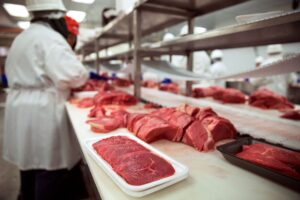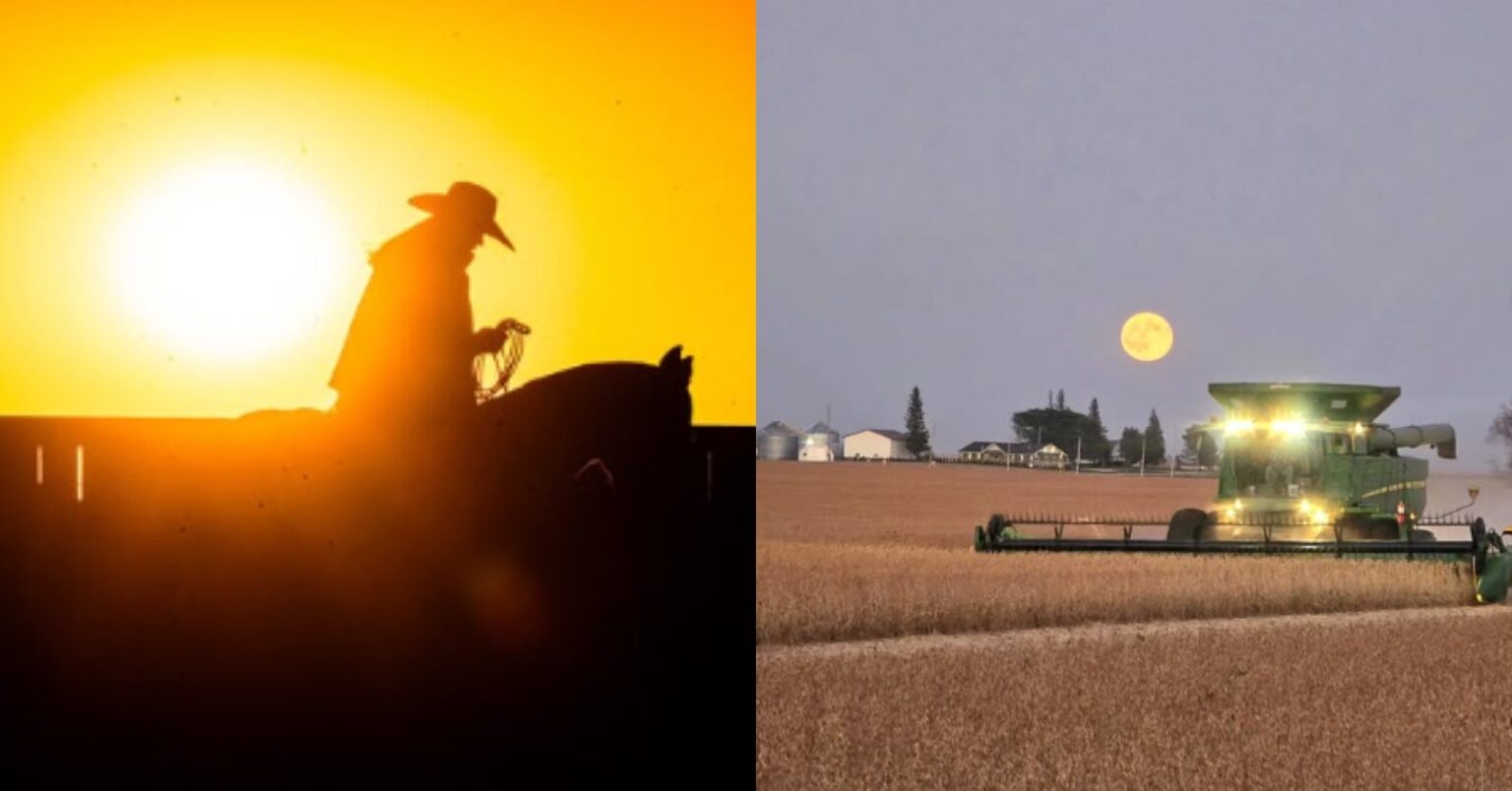Subscribe to Updates
Get the latest agriculture news and updates directly to your inbox.
Author: staff
It’s notoriously difficult to shop for gifts for farmers. How many socket sets does one person need? These ideas are useful enough for a farmer to appreciate, but they wouldn’t necessarily buy them for themselves. That’s a recipe for a great gift! Keep the Pigs Warm Make winter chores more bearable with these rechargeable heated insoles from Weston. They come in two sizes and can easily be moved from work boots to tennis shoes. The water-resistant insoles have eight heating zones and three temperature levels, warming to 130°F in temperatures as low as -20°F. A charge lasts around eight hours,…
For Justin Butts, the path to becoming a farmer was riddled with bumps and detours, including a stint in the Navy, a misdiagnosed medical crisis, culinary school, and a derailed first attempt at leasing a farm. Thanks to the work ethic and ability to persevere he honed in the Navy, Butts finally has his own farm, and now he’s giving back. 15 Minutes With Justin Butts See more episodes of 15 Minutes With a Farmer. Please rate and review us! Garden Roots As a child in rural Pennsylvania, Butts enjoyed gardening alongside his grandfather, a World War II veteran. “When…
The Supreme Court heard arguments this week on President Donald Trump’s use of emergency powers to impose tariffs. Sen. Amy Klobuchar, D-Minn., the top Democrat on the Senate Ag Committee, discussed attending the arguments and why she believes the court will strike down the president’s use of a 1977 law to implement his tariffs. She also outlined what’s needed to end the government shutdown and whether she’ll support farm aid for trade losses this year. Trade experts Greta Peisch of Wiley Rein and Mayur Patel of Hogan Lovells also weighed in on the case’s implications for agriculture. Watch the Episode…
By Morgan Chilson TOPEKA — China’s plan to increase soybean and sorghum purchases moved the market in a positive direction and gave Kansas farmers a measure of relief amid high input prices and tariff challenges. “It was great to see that America’s farmers, our soybean producers especially, were a priority in conversation last week with China,” said Kaleb Little, CEO of the Kansas Soybean Association. “Sept. 1 started that new crop year, and up until last week, China had bought zero new crop soybeans from the U.S.” China has traditionally been the largest international purchaser of U.S. soybeans, but this year’s…
The U.S. Drought Monitor released its latest map this week, highlighting a mixed pattern of drought changes, with both improvements and renewed dryness across the country. Locally heavy rainfall (1–4 inches) was reported in northwestern Montana, northern Idaho, and much of the Northeast. Lighter totals, generally 0.5–2 inches, were observed across the Middle and Lower Mississippi Valley, upper Southeast, central Carolinas, central Appalachians, and Upper Ohio Valley. In contrast, much of the Lower Mississippi Valley, the central and eastern Gulf Coast, the South Atlantic region, and the Great Lakes received little to no measurable precipitation. Following last week’s beneficial rainfall,…
October has come and gone, and harvest in the U.S. is nearing the finish line. While the USDA has yet to resume publishing its weekly crop progress reports, a Reuters poll shows U.S. soybean harvest was 91% complete and corn harvest was 83% complete as of Sunday. To get a sense of how October unfolded in the field, we asked agronomists across the Corn Belt to sum up the month in a single word. Variabile Nick Groth, agronomic service representative for Syngenta Crop Protection covering the state of Wisconsin, described the corn crop progress for the month of October as variable.…
We bring you some of the best farm photos from the week this Friday, November 7, 2025! Want to get listed in this weekly feature? Be sure to hashtag your Instagram pics with #agdaily. View this post on Instagram A post shared by Hungry for Truth (@hungryfortruthsd) View this post on Instagram A post shared by Denise T: Ranchin’ w/Vinnie (@denise4js) View this post on Instagram A post shared by Jessica Heiden (@jessheiden) View this post on Instagram A post shared by Oobree Farms (@oobree_farms) View this post on Instagram A post shared by Rodey and Brooke Wilson (@wilsoncattle_) View…
The November USDA World Agricultural Supply and Demand Estimates (WASDE) has been rescheduled for release from Monday, Nov. 10, to Friday, Nov. 14. This will be the first update to U.S. and global supplies since Sept. 12. Here is what farmers need to know about the U.S. corn, soybean, and wheat markets, and what Grain Market Insider will be looking for in the updated balance sheets. Private estimates for the October WASDE had corn ending stocks increasing from 2.110 billion bushels in September to 2.231 billion, soybean ending stocks unchanged at 300 million bushels, and wheat ending stocks increasing from…
If you’ve been scrolling TikTok lately, you may have noticed something strange trending. Brass bull rings — yes, the ones meant for actual bulls — are flying off the shelves. But it’s not a surge in livestock management. It’s a new fashion movement, marked with #bullring. And it has farmers and ranchers everywhere either laughing, groaning, or double-checking their supply orders. Creators such as jade_pebworth have posted videos showing how to turn a 3-inch brass bull ring into a stamped, polished bangle bracelet. The result? A rustic piece of jewelry, that’s meant to turn heads (cattle, that is). @jade_pebworth Part…
December corn ended the day and the week in the red. For the day, the contract closed down 1½¢ at $4.27¼ per bushel. For the week, the contract was down 4¼¢. January soybeans ended the day and week in the green. For the day, the contract closed up 9½¢ at $11.17 per bushel. Week-over-week, the contract was up 1¾¢. December CBOT wheat ended the day down 7¾¢ at $5.27¾ per bushel. December KC wheat was down 3¢ at $5.19¼ per bushel. December Minneapolis wheat was up a penny at $5.58. Week-over-week, December CBOT and KC wheat were lower, while December…







:max_bytes(150000):strip_icc()/GettyImages-650161233-6b77b44a0a8d4dbcad0045fe41a17b03.jpg)
:max_bytes(150000):strip_icc()/ButtsKunekuneWeb-f77791739a0c4a8491d10a7b494d6b5f.jpg)
:max_bytes(150000):strip_icc()/AndrewHarnikStaff-2244643649-4351ae16e58349338cb14e132bad0afc.jpg)
:max_bytes(150000):strip_icc()/soybean_harvest_4-1024x683-1-2b199a59dbe74e96b0b2bad60607d8f7.jpg)
:max_bytes(150000):strip_icc()/JohnDeereCombineHarvestingSoybeans-WideShot-2000-d6093fa12f0046899e0c3f9c3b25068f.jpg)
:max_bytes(150000):strip_icc()/LL20Harvest20night-2000-a87b5b7270604f919ad1e23775901cab.jpeg)

:max_bytes(150000):strip_icc()/100884485_farm_grain_bin_silo-b7f811c88bdf4f078a84d89af363ddd5.jpg)

:max_bytes(150000):strip_icc()/Markets-3-Soybeans-field-up-15-d7bb49aa885c410c882b187195cc5066.jpeg)